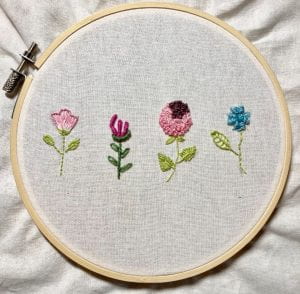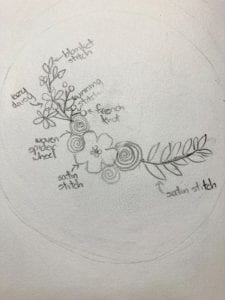“Listening is an art that requires attention over talent, spirit over ego, others over self.”
– Dean Jackson
Over the past two weeks, I have continued to develop a better and deeper mentorship by emphasizing the importance of active listening and asking thoughtful questions. As Edward de Bono states in his book, How to Have a Beautiful Mind, “If you do not want to listen to anyone else then why should anyone else want to listen to you?” (67).
In order to be a good listener, one needs to “show that he or she is paying attention to what is being said,” “respect the speaker,” “show […] genuine interest in what he or she hears,” and get “value from what is heard” (66). In my last meeting with my mentor, I was particularly cognizant of showing my respect, interest, and appreciation through my body language. By nodding and smiling at different key points in my mentor’s message, I was able to demonstrate my engagement without interrupting her or distracting her. I also paraphrased what I thought my mentor, Michelle, was saying sometimes. By repeating and summarising what had been said, I not only showed understanding and interest, but also further clarified the situation in my own mind. For instance, after Michelle gave some of her valuable insight on designing embroidery patterns, I recapitulated her points, saying, “I think I heard you say that designing patterns should be a way to experiment with new techniques and showcase your creativity, but it is also important to bear in mind your current skillset by starting small and focusing on incorporating a few stitches at a time to avoid feeling overwhelmed. Is that correct?”
Because designing my own patterns is something that I am very interested in, I asked a few follow-up questions to draw attention to and highlight this area. I began by asking, “Have you ever tried designing your own patterns or deviating from patterns that you have found?” Michelle’s response, which featured some of her own experiences with designing patterns, made me get to know her much better. She also mentioned using iron-on patterns, guidelines that would easily wash out of the fabric, as a beginner and finding creativity and self-expression in that area. “Since those [iron-on guidelines] didn’t really tell you which specific stitches to use in each area, I would experiment with the stitches I knew to fill them in.”
I continued to ask a variety of questions throughout the meeting. One new distinction I learned was the difference between shooting and fishing questions, which de Bono explains as the difference between “‘yes’ or ‘no’” questions and “open-ended [questions where] the questioner does not know what answer will be given” (79/80).
An example of a shooting question I asked Michelle is “Should I iron my embroidery if the fabric is beginning to wrinkle?” She responded by saying, “Yes, you definitely should! You can gently hand wash the piece first, then put another piece of fabric on top – it can be any fabric scrap as long as it is 100% cotton – and use a spray bottle or something similar to make the top piece slightly damp. This will give a little bit of protection to your embroidery when you’re ironing.” Another example of a shooting question is “Could I hem the edges of the fabric to prevent it from unravelling?” Michelle responded by saying that I could if I would like, but she also suggested many other uses for finished pieces that I will describe later in this blog post.
In terms of fishing questions, I asked Michelle, “Any organization tips for storing partly used thread?” Over the past few weeks, I have accumulated a box full of stray strands of embroidery floss, and I was really looking for a more effective system. My mentor responded with a plethora of ideas, suggesting purchasing a small plastic container from either the hardware section of a dollar store or at a specialized crafts store like Michaels, using plastic Ziploc bags to store floss according to their colour, and cutting slits in a strip of cardboard from where thread can hang from. I am looking to try out her suggestions over the next few days and will give an update alongside my next blog post!
I also asked, “What are some ideas for making use of my completed practice embroidery pieces?” To this, Michelle gave an incredibly in-depth response. Her ideas included cutting out embroidered flowers and making them into cards by pasting them behind a window cut out of cardstock, sewing them as patches onto tea towels, pillows, or other fabric, or framing them (and ironing the edges down to protect and hide hems). She also mentioned that these would all make great gifts, especially if I personalized them by embroidering names onto the fabric with the running stitch. From this, I learned that both Michelle and I value handcrafted items and the meaning behind the gifts we give to loved ones. She promised to teach me the techniques for these projects during our next meeting, so my attempts at them will be detailed in my next blog post!
Another skill I practiced is generating and suggesting additional possibilities. Although I had mentioned designing my own embroidery patterns at the start of my mentorship with Michelle, I brought it up again this week, as it was an aspect of embroidery I was really looking forward to. My mentor, who had always been amazing at listening to the direction I wanted to take this in-depth project, supported me by saying, “Designing your pattern is definitely something you’re ready for!” She then continued by giving me an overview of how it could be done. I responded with another possibility, asking her, “Could I sketch some designs in my sketchbook and try to fill them in with stitches, and then send those to you?”
Since my last post, I have finished a few more flower designs. Through these designs, I have learned how to modify the stitches I know to better suit the pattern, which will be very beneficial when designing my own pattern. For instance, for the petals of one of the flowers, I used the blanket stitch but curved the top stitches to make them fit the shape of the flower. I also used individual lazy daisy stitches for leaves, french knots for large circular flowers and ferns, and skipped every third weave of the woven spider wheel to create a poppy-like flower. Moreover, I worked on some potential designs for my own pattern. I am particularly enjoying creating the form of my piece, as I am no longer restrained to rows of upright flowers. I am also considering incorporating other mediums, such as buttons and beads, something I experimented with in the blue flower I embroidered for practice. In order to further expand my embroidery vocabulary, I am also beginning to follow some simple animal designs. Once I become more comfortable with those, I hope to create some more complex patterns featuring both plants and animals.
I am very proud of what Michelle has helped me accomplish so far, and I can’t wait to take embroidery to the next level in the following weeks!



Leave a Reply